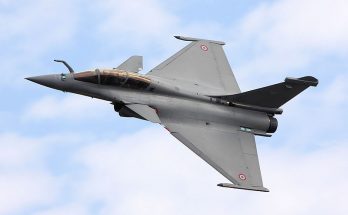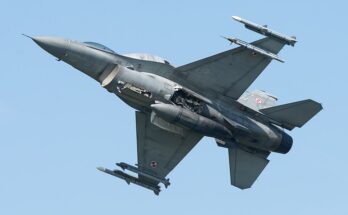
Russia’s invasion of Ukraine has given rise to uncertainty about the broader security situation in Europe, and raises questions about U.S. defense investment as Washington weighs its response options. With Congress still finalizing the FY22 defense budget and the FY23 request on the horizon, onlookers may wonder what effect Moscow’s actions will have on U.S. defense outlays over the coming year and beyond.
The budgetary impact can be considered on two timescales: near-term investment for any immediate actions taken as a result of the invasion, and longer-term changes resulting from revised strategies or altered acquisition plans.
The U.S. response at this time is centered on economic sanctions and diplomatic actions, and the White House has clearly stated it has no intention of sending U.S. forces into Ukraine to halt the Russian invasion. Thus far the U.S. has deployed some military equipment and increased its footprint by several thousand troops in parts of Europe, including the Baltics, Poland, and Romania. On Thursday, President Joe Biden announced the deployment of an armored brigade combat team, consisting of another 7,000 troops, to Germany. Those troops are there to help protect the territorial integrity of NATO allies, rather than to defend Ukraine. This means resources won’t be needed for large-scale military operations such as those in Iraq and Afghanistan, which required massive supplemental spending requests. But the fog of war also increases the risk of an unintentional encounter between Russian and NATO forces that could have a costly ripple effect.
The expense of smaller troop rotations and increased surveillance flights must still be accounted for, particularly given the increasing cost of fuel, but it remains to be seen if the Pentagon will find that money in its existing coffers or if it will seek additional resources from Congress through a supplemental. Any change to the U.S. response in the coming days and weeks would also alter anticipated funding requirements.
The U.S. could send additional military aid to Ukraine, such as anti-tank weapons, which would require replenishment in the next defense budget. However, the flow of weapons into Ukraine could be slowed due to the lack of secure airspace. It’s also unclear how long the current conflict will last.
Longer-term impacts on U.S. defense spending will hinge on a number of factors, such as the scope of U.S. deployments abroad, changes to the U.S. defense strategy, renewed investment in new weapons technologies, and, of course, potential intervention from Congress.
Shortly after Russia’s annexation of Crimea in 2014, the U.S. established what it called the European Reassurance Initiative (now known as the European Deterrence Initiative), a multibillion- dollar effort to support rotational deployments and infrastructure investment in Europe. The deployments were intended to provide a U.S. forward presence without relying on expensive permanent deployments. The EDI was funded at $6 billion in FY20, $4.5 billion in FY21, and $3.7 billion in the FY22 budget request. That downward trend may be reversed in the upcoming budget request. President Biden also halted a drawdown of U.S. forces from Europe initiated by his predecessor, and additional resources could be required if Washington decides to bolster its forces in the region over the long term.
A new version of the national defense strategy is slated to be released soon, but it remains to be seen if the strategy will specifically call for additional resources in the wake of Russia’s actions. The Biden administration has already labeled China the “pacing threat” due to its economic growth and military expansion, but Russia’s disregard for international order makes Moscow a wild card. The next defense strategy’s spotlight on China won’t change, as the country remains the dominant force abroad. Beijing’s military modernization efforts remain a concern for the Pentagon, and Russia’s invasion of Ukraine will only increase Washington’s desire to avoid a similar fate between China and Taiwan. Still, the threat posed by a more aggressive Russia has only been made more visceral, increasing the need to adequately address European security in the next defense strategy.
Moscow’s increased willingness to exert force to secure its interests could also result in investments from the Pentagon to accelerate or expand the scope of new weapons systems currently in development, such as hypersonic defense capabilities, hypersonic missiles and other long-range fires, kinetic and directed-energy air defense systems, and methods to protect space assets from anti-satellite weapons.
Reports have indicated that the Pentagon’s FY23 budget request could reach $773 billion, which would reflect an increase of around 8.1 percent compared to the FY22 request. That topline would be 4.5 percent higher than the final FY22 defense spending bill now being finalized by Congress, which includes a $25 billion plus-up from lawmakers. While a $773 billion budget in FY23 would be higher than expected, the Pentagon is also facing high inflation that will eat away at its buying power. So even if the Pentagon’s new budget proposal exceeds $770 billion, the combination of high inflation and a desire to respond to Moscow’s latest actions could result in Congress adding even more funding to the budget in FY23.
Shaun's deep-rooted interest in military equipment continues in his role as a senior defense analyst with a focus on the United States. He played an integral role in the development of Forecast International's U.S. Defense Budget Forecast, an interactive online product that tracks Pentagon acquisition programs throughout the congressional budget process. As editor of International Military Markets – North America, Shaun has cultivated a deep understanding of the vast defense markets in the United States and Canada. He is a regular contributor to Forecast International's Defense & Security Monitor blog and has co-authored white papers on global defense spending and various military programs.




